In-Depth Analysis and Characterization of a Hazelnut Agro-Industrial Context through the Integration of Multi-Source Satellite Data: A Case Study in the Province of Viterbo, Italy
Abstract
1. Introduction
2. Materials and Methods
2.1. Study Area (AOI)
2.2. Ground Truth
- 1.
- Non-Photosynthetic Surfaces (NPSs), including urban areas, bare soils, rocks, and water bodies (1168 points).
- 2.
- Arable Lands (AL), extensive areas devoted to arable farming or annual crop cultivation, characterized by the absence of arboreal vegetation (3016 points).
- 3.
- Mixed Agricultural Areas (MAAs), encompassing tree vegetation associated with olive groves, vineyards, and various types of fruit orchards with diverse management practices (3060 points).
- 4.
- Vegetation (VEG), represent areas covered by varying degrees of woodland vegetation. Spontaneous vegetation, woodland, coppices, chestnut groves, riparian areas, and scattered vegetation were included. This class encompasses a wide range of habitats, from Mediterranean scrub to garigue, evergreen and deciduous oak forests, pine groves, and beech woods (4374 points).
- 5.
- Hazelnuts (HZs), comprising mature hazelnut plantations (>5 years) (2993 points).
2.3. Satellite Data
- 4 × 10 m Bands: the three classical RGB bands (B2, B3, B4) and a Near Infra-Red (B8∼833 nm) band.
- 6 × 20 m Bands: 4 narrow bands in the VNIR vegetation Red-Edge spectral domain (B5∼704 nm, B6∼740 nm, B7∼783 nm and B8a∼865 nm) and 2 wider SWIR bands (B11∼1610 nm and B12∼2190 nm) for applications such as vegetation moisture stress assessment.
2.3.1. Sentinel 2 Pre-Processing
2.3.2. Sentinel 1 Pre-Processing
2.3.3. Digital Elevation Model (DEM)
2.4. Reference and Training Datasets
2.5. Spectral Separability Analysis
2.6. Models Training and Test
2.7. Hazelnut Groves Characterization
- Ground validation and historical imagery.
- Interpretation through indices: A total of 1700 random sampling points were placed within the polygons of each cluster, resulting in a total of 5100 sampling points. Spectral–temporal data were extracted from the reference dataset at these points, and three specific indices were applied to analyze and interpret the data. These indices (VH/VV ratio, NDVI, NDMI) are widely used in the literature to define phenological stages and biophysical parameters of vegetation [17,86,87].
3. Results
3.1. Spectral Separability Analysis
3.2. Model Performance on Training and Hyperparameters
3.2.1. Model Performance on Test
3.2.2. Importance of the Variables
3.3. Classification on AOI
Hazelnut Groves on AOI
3.4. Characterization of HZ Polygon
3.4.1. PCA and Cluster Identification
3.4.2. Clusters Analysis
4. Discussion
4.1. Model Performance Results and Classification of AOI
4.2. Characterization of a Hazelnut Polygon
5. Conclusions
Author Contributions
Funding
Data Availability Statement
Acknowledgments
Conflicts of Interest
References
- FAO. FAOSTAT Food and Agriculture Data; FAO: Rome, Italy, 2023. [Google Scholar]
- Allegrini, A.; Salvaneschi, P.; Schirone, B.; Cianfaglione, K.; Di Michele, A. Multipurpose plant species and circular economy: Corylus avellana L. as a study case. Front. Biosci.-Landmark 2022, 27, 11. [Google Scholar] [CrossRef] [PubMed]
- Franco, S.; Pancino, B.; Cristofori, V. Hazelnut production and local development in Italy. In Proceedings of the VIII International Congress on Hazelnut, Temuco City, Chile, 19–22 March 2012; Volume 1052, pp. 347–352. [Google Scholar]
- Istat. Coltivazioni Superfici e Produzione. 2022. Available online: http://dati.istat.it/Index.aspx?QueryId=37850 (accessed on 6 June 2023).
- Zinnanti, C.; Schimmenti, E.; Borsellino, V.; Paolini, G.; Severini, S. Economic performance and risk of farming systems specialized in perennial crops: An analysis of Italian hazelnut production. Agric. Syst. 2019, 176, 102645. [Google Scholar] [CrossRef]
- Moscetti, R.; Radicetti, E.; Monarca, D.; Cecchini, M.; Massantini, R. Near infrared spectroscopy is suitable for the classification of hazelnuts according to Protected Designation of Origin. J. Sci. Food Agric. 2015, 95, 2619–2625. [Google Scholar] [CrossRef] [PubMed]
- Nera, E.; Paas, W.; Reidsma, P.; Paolini, G.; Antonioli, F.; Severini, S. Assessing the Resilience and Sustainability of a Hazelnut Farming System in Central Italy with a Participatory Approach. Sustainability 2020, 12, 343. [Google Scholar] [CrossRef]
- Biagetti, E.; Pancino, B.; Martella, A.; La Porta, I.M.; Cicatiello, C.; De Gregorio, T.; Franco, S. Is Hazelnut Farming Sustainable? An Analysis in the Specialized Production Area of Viterbo. Sustainability 2023, 15, 10702. [Google Scholar] [CrossRef]
- Fabi, A.; Varvaro, L. Remote Sensing for Monitoring Hazelnut Dieback in the Monti Cimini District (Central Italy). In Proceedings of the VII International Congress on Hazelnut, Viterbo, Italy, 23–27 June 2008; Volume 845, pp. 521–526. [Google Scholar]
- Vinci, A.; Traini, C.; Farinelli, D.; Brigante, R. Assessment of the geometrical characteristics of hazelnut intensive orchard by an Unmanned Aerial Vehicle (UAV). In Proceedings of the 2022 IEEE Workshop on Metrology for Agriculture and Forestry (MetroAgriFor), Perugia, Italy, 3–5 November 2022; pp. 218–222. [Google Scholar]
- Moran, M.; Inoue, Y.; Barnes, E. Opportunities and limitations for image-based remote sensing in precision crop management. Remote Sens. Environ. 1997, 61, 319–346. [Google Scholar] [CrossRef]
- Modica, G.; Merlino, A.; Solano, F.; Mercurio, R. An index for the assessment of degraded Mediterranean forest ecosystems. For. Syst. 2015, 24, 5. [Google Scholar] [CrossRef]
- Solano, F.; Praticò, S.; Piovesan, G.; Chiarucci, A.; Argentieri, A.; Modica, G. Characterizing historical transformation trajectories of the forest landscape in Rome’s metropolitan area (Italy) for effective planning of sustainability goals. Land Degrad. Dev. 2021, 32, 4708–4726. [Google Scholar] [CrossRef]
- Hatfield, P.; Pinter, P. Remote sensing for crop protection. Crop Prot. 1993, 12, 403–413. [Google Scholar] [CrossRef]
- Wardlow, B.D.; Egbert, S.L. Large-area crop mapping using time-series MODIS 250 m NDVI data: An assessment for the U.S. Central Great Plains. Remote Sens. Environ. 2008, 112, 1096–1116. [Google Scholar] [CrossRef]
- Zhong, L.; Hu, L.; Zhou, H. Deep learning based multi-temporal crop classification. Remote Sens. Environ. 2019, 221, 430–443. [Google Scholar] [CrossRef]
- Fathololoumi, S.; Firozjaei, M.K.; Li, H.; Biswas, A. Surface biophysical features fusion in remote sensing for improving land crop/cover classification accuracy. Sci. Total Environ. 2022, 838, 156520. [Google Scholar] [CrossRef] [PubMed]
- Pollino, M.; Lodato, F.; Colonna, N. Spatio-Temporal Dynamics of Urban and Natural Areas in the Northern Littoral Zone of Rome: Land-Cover Change Analysis During the Last Thirty Years. Preliminary Results. In Proceedings of the Computational Science and Its Applications–ICCSA 2020: 20th International Conference, Cagliari, Italy, 1–4 July 2020; Volume 12253, pp. 567–575. [Google Scholar] [CrossRef]
- Fichera, C.R.; Modica, G.; Pollino, M. Land Cover classification and change-detection analysis using multi-temporal remote sensed imagery and landscape metrics. Eur. J. Remote Sens. 2012, 45, 1–18. [Google Scholar] [CrossRef]
- Modica, G.; Vizzari, M.; Pollino, M.; Fichera, C.; Zoccali, P.; Di Fazio, S. Spatio-temporal analysis of the urban-rural gradient structure: An application in a Mediterranean mountainous landscape (Serra San Bruno, Italy). Earth Syst. Dyn. 2012, 3, 263–279. [Google Scholar] [CrossRef]
- Orynbaikyzy, A.; Gessner, U.; Mack, B.; Conrad, C. Crop Type Classification Using Fusion of Sentinel-1 and Sentinel-2 Data: Assessing the Impact of Feature Selection, Optical Data Availability, and Parcel Sizes on the Accuracies. Remote Sens. 2020, 12, 2779. [Google Scholar] [CrossRef]
- Joshi, N.; Baumann, M.; Ehammer, A.; Fensholt, R.; Grogan, K.; Hostert, P.; Jepsen, M.R.; Kuemmerle, T.; Meyfroidt, P.; Mitchard, E.T.A.; et al. A Review of the Application of Optical and Radar Remote Sensing Data Fusion to Land Use Mapping and Monitoring. Remote Sens. 2016, 8, 70. [Google Scholar] [CrossRef]
- Wang, J.; Xiao, X.; Liu, L.; Wu, X.; Qin, Y.; Steiner, J.L.; Dong, J. Mapping sugarcane plantation dynamics in Guangxi, China, by time series Sentinel-1, Sentinel-2 and Landsat images. Remote Sens. Environ. 2020, 247, 111951. [Google Scholar] [CrossRef]
- Sedighi, A.; Hamzeh, S.; Firozjaei, M.K.; Goodarzi, H.V.; Naseri, A.A. Comparative Analysis of Multispectral and Hyperspectral Imagery for Mapping Sugarcane Varieties. PFG-J. Photogramm. Remote Sens. Geoinf. Sci. 2023, 91, 453–470. [Google Scholar] [CrossRef]
- Cai, Y.; Lin, H.; Zhang, M. Mapping paddy rice by the object-based random forest method using time series Sentinel-1/Sentinel-2 data. Adv. Space Res. 2019, 64, 2233–2244. [Google Scholar] [CrossRef]
- Shuai, G.; Zhang, J.; Basso, B.; Pan, Y.; Zhu, X.; Zhu, S.; Liu, H. Multi-temporal RADARSAT-2 polarimetric SAR for maize mapping supported by segmentations from high-resolution optical image. Int. J. Appl. Earth Obs. Geoinf. 2019, 74, 1–15. [Google Scholar] [CrossRef]
- Ajadi, O.A.; Barr, J.; Liang, S.Z.; Ferreira, R.; Kumpatla, S.P.; Patel, R.; Swatantran, A. Large-scale crop type and crop area mapping across Brazil using synthetic aperture radar and optical imagery. Int. J. Appl. Earth Obs. Geoinf. 2021, 97, 102294. [Google Scholar] [CrossRef]
- Steinhausen, M.J.; Wagner, P.D.; Narasimhan, B.; Waske, B. Combining Sentinel-1 and Sentinel-2 data for improved land use and land cover mapping of monsoon regions. Int. J. Appl. Earth Obs. Geoinf. 2018, 73, 595–604. [Google Scholar] [CrossRef]
- Altun, M.; Turker, M. Integration of Sentinel-1 and Landsat-8 images for crop detection: The case study of Manisa, Turkey. Adv. Remote Sens. 2022, 2, 23–33. [Google Scholar]
- Nabil, M.; Farg, E.; Arafat, S.M.; Aboelghar, M.; Afify, N.M.; Elsharkawy, M.M. Tree-fruits crop type mapping from Sentinel-1 and Sentinel-2 data integration in Egypt’s New Delta project. Remote Sens. Appl. Soc. Environ. 2022, 27, 100776. [Google Scholar] [CrossRef]
- Brinkhoff, J.; Vardanega, J.; Robson, A.J. Land Cover Classification of Nine Perennial Crops Using Sentinel-1 and -2 Data. Remote Sens. 2020, 12, 96. [Google Scholar] [CrossRef]
- Akcay, H.; Kaya, S.; Sertel, E.; Alganci, U. Determination of Olive Trees with Multi-sensor Data Fusion. In Proceedings of the 2019 8th International Conference on Agro-Geoinformatics (Agro-Geoinformatics), Istanbul, Turkey, 16–19 July 2019; pp. 1–6. [Google Scholar] [CrossRef]
- Singh, R.; Patel, N.; Danodia, A. Mapping of sugarcane crop types from multi-date IRS-Resourcesat satellite data by various classification methods and field-level GPS survey. Remote Sens. Appl. Soc. Environ. 2020, 19, 100340. [Google Scholar] [CrossRef]
- Karakizi, C.; Oikonomou, M.; Karantzalos, K. Vineyard Detection and Vine Variety Discrimination from Very High Resolution Satellite Data. Remote Sens. 2016, 8, 235. [Google Scholar] [CrossRef]
- Fieuzal, R.; Marais Sicre, C.; Baup, F. Estimation of corn yield using multi-temporal optical and radar satellite data and artificial neural networks. Int. J. Appl. Earth Obs. Geoinf. 2017, 57, 14–23. [Google Scholar] [CrossRef]
- Das, A.; Kumar, M.; Kushwaha, A.; Dave, R.; Dakhore, K.K.; Chaudhari, K.; Bhattacharya, B.K. Machine learning model ensemble for predicting sugarcane yield through synergy of optical and SAR remote sensing. Remote Sens. Appl. Soc. Environ. 2023, 30, 100962. [Google Scholar] [CrossRef]
- Beeri, O.; Netzer, Y.; Munitz, S.; Mintz, D.F.; Pelta, R.; Shilo, T.; Horesh, A.; Mey-tal, S. Kc and LAI Estimations Using Optical and SAR Remote Sensing Imagery for Vineyards Plots. Remote Sens. 2020, 12, 3478. [Google Scholar] [CrossRef]
- Modica, G.; Pollino, M.; Solano, F. Sentinel-2 imagery for mapping cork oak (Uercus suber L.) Distribution in calabria (Italy): Capabilities and quantitative estimation. Smart Innov. Syst. Technol. 2019, 100, 60–67. [Google Scholar] [CrossRef]
- Basso, B.; Fiorentino, C.; Cammarano, D.; Schulthess, U. Variable rate nitrogen fertilizer response in wheat using remote sensing. Precis. Agric. 2016, 17, 168–182. [Google Scholar] [CrossRef]
- Ramsey III, E.; Rangoonwala, A.; Chi, Z.; Jones, C.E.; Bannister, T. Marsh Dieback, loss, and recovery mapped with satellite optical, airborne polarimetric radar, and field data. Remote Sens. Environ. 2014, 152, 364–374. [Google Scholar] [CrossRef]
- Orynbaikyzy, A.; Gessner, U.; Conrad, C. Crop type classification using a combination of optical and radar remote sensing data: A review. Int. J. Remote Sens. 2019, 40, 6553–6595. [Google Scholar] [CrossRef]
- Talukdar, S.; Singha, P.; Mahato, S.; Shahfahad.; Pal, S.; Liou, Y.A.; Rahman, A. Land-Use Land-Cover Classification by Machine Learning Classifiers for Satellite Observations—A Review. Remote Sensing 2020, 12, 1135. [Google Scholar] [CrossRef]
- Bouguettaya, A.; Zarzour, H.; Kechida, A.; Taberkit, A.M. Deep learning techniques to classify agricultural crops through UAV imagery: A review. Neural Comput. Appl. 2022, 34, 9511–9536. [Google Scholar] [CrossRef]
- Wang, L.; Wang, J.; Liu, Z.; Zhu, J.; Qin, F. Evaluation of a deep-learning model for multispectral remote sensing of land use and crop classification. Crop J. 2022, 10, 1435–1451. [Google Scholar] [CrossRef]
- Lu, T.; Wan, L.; Wang, L. Fine crop classification in high resolution remote sensing based on deep learning. Front. Environ. Sci. 2022, 10, 991173. [Google Scholar] [CrossRef]
- Yao, J.; Wu, J.; Xiao, C.; Zhang, Z.; Li, J. The Classification Method Study of Crops Remote Sensing with Deep Learning, Machine Learning, and Google Earth Engine. Remote Sens. 2022, 14, 2758. [Google Scholar] [CrossRef]
- Gorelick, N.; Hancher, M.; Dixon, M.; Ilyushchenko, S.; Thau, D.; Moore, R. Google Earth Engine: Planetary-scale geospatial analysis for everyone. Remote Sens. Environ. 2017, 202, 18–27. [Google Scholar] [CrossRef]
- Tamiminia, H.; Salehi, B.; Mahdianpari, M.; Quackenbush, L.; Adeli, S.; Brisco, B. Google Earth Engine for geo-big data applications: A meta-analysis and systematic review. ISPRS J. Photogramm. Remote Sens. 2020, 164, 152–170. [Google Scholar] [CrossRef]
- Franco, S. Use of remote sensing to evaluate the spatial distribution of hazelnut cultivation: Results of a study performed in an Italian production area. In Proceedings of the IV International Symposium on Hazelnut, Ordu, Turkey, 30 July 1996; Volume 445, pp. 381–398. [Google Scholar]
- Peña, M.; Liao, R.; Brenning, A. Using spectrotemporal indices to improve the fruit-tree crop classification accuracy. ISPRS J. Photogramm. Remote Sens. 2017, 128, 158–169. [Google Scholar] [CrossRef]
- Reis, S.; Taşdemir, K. Identification of hazelnut fields using spectral and Gabor textural features. ISPRS J. Photogramm. Remote Sens. 2011, 66, 652–661. [Google Scholar] [CrossRef]
- Akar, Ö.; Güngör, O. Integrating multiple texture methods and NDVI to the Random Forest classification algorithm to detect tea and hazelnut plantation areas in northeast Turkey. Int. J. Remote Sens. 2015, 36, 442–464. [Google Scholar] [CrossRef]
- Giandomenico De Luca, J.M.N.S.; Modica, G. Regional-scale burned area mapping in Mediterranean regions based on the multitemporal composite integration of Sentinel-1 and Sentinel-2 data. GIScience Remote Sens. 2022, 59, 1678–1705. [Google Scholar] [CrossRef]
- Giandomenico De Luca, J.M.S.; Modica, G. A workflow based on Sentinel-1 SAR data and open-source algorithms for unsupervised burned area detection in Mediterranean ecosystems. GIScience Remote Sens. 2021, 58, 516–541. [Google Scholar] [CrossRef]
- Yi, Z.; Jia, L.; Chen, Q. Crop Classification Using Multi-Temporal Sentinel-2 Data in the Shiyang River Basin of China. Remote Sens. 2020, 12, 4052. [Google Scholar] [CrossRef]
- De Luca, G.; Silva, J.M.N.; Di Fazioa, S.; Modica, G. Integrated use of Sentinel-1 and Sentinel-2 data and open-source machine learning algorithms for land cover mapping in a Mediterranean region. Eur. J. Remote Sens. 2022, 55, 52–70. [Google Scholar] [CrossRef]
- Scoppola, A.; Caporali, C. Mesophilous woods with Fagus sylvatica L. of northern Latium (Tyrrhenian Central Italy): Synecology and syntaxonomy. Plant-Biosyst. Int. J. Deal. All Asp. Plant Biol. 1998, 132, 151–168. [Google Scholar]
- Cristofori, V.; Blasi, E.; Pancino, B.; Stelliferi, R.; Lazzari, M. Recent innovations in the implementation and management of the hazelnut orchards in Italy. In Proceedings of the X International Symposium on Modelling in Fruit Research and Orchard Management, Montpellier, France, 2 June 2015; Volume 1160, pp. 165–172. [Google Scholar]
- Coppola, G.; Costantini, M.; Orsi, L.; Facchinetti, D.; Santoro, F.; Pessina, D.; Bacenetti, J. A Comparative Cost-Benefit Analysis of Conventional and Organic Hazelnuts Production Systems in Center Italy. Agriculture 2020, 10, 409. [Google Scholar] [CrossRef]
- Abriha, D.; Srivastava, P.K.; Szabó, S. Smaller is better? Unduly nice accuracy assessments in roof detection using remote sensing data with machine learning and k-fold cross-validation. Heliyon 2023, 9, e14045. [Google Scholar] [CrossRef] [PubMed]
- Wu, Q. geemap: A Python package for interactive mapping with Google Earth Engine. J. Open Source Softw. 2020, 5, 2305. [Google Scholar] [CrossRef]
- ESA. Sentinel 2. 2023. Available online: https://sentinel.esa.int/web/sentinel/missions/sentinel-2 (accessed on 27 October 2023).
- Frampton, W.J.; Dash, J.; Watmough, G.; Milton, E.J. Evaluating the capabilities of Sentinel-2 for quantitative estimation of biophysical variables in vegetation. ISPRS J. Photogramm. Remote Sens. 2013, 82, 83–92. [Google Scholar] [CrossRef]
- ESA. Sentinel-1. 2023. Available online: https://sentinel.esa.int/web/sentinel/missions/sentinel-1 (accessed on 27 October 2023).
- Veloso, A.; Mermoz, S.; Bouvet, A.; Le Toan, T.; Planells, M.; Dejoux, J.F.; Ceschia, E. Understanding the temporal behavior of crops using Sentinel-1 and Sentinel-2-like data for agricultural applications. Remote Sens. Environ. 2017, 199, 415–426. [Google Scholar] [CrossRef]
- Van Tricht, K.; Gobin, A.; Gilliams, S.; Piccard, I. Synergistic use of radar Sentinel-1 and optical Sentinel-2 imagery for crop mapping: A case study for Belgium. Remote Sens. 2018, 10, 1642. [Google Scholar] [CrossRef]
- Inglada, J.; Vincent, A.; Arias, M.; Marais-Sicre, C. Improved early crop type identification by joint use of high temporal resolution SAR and optical image time series. Remote Sens. 2016, 8, 362. [Google Scholar] [CrossRef]
- Mandal, D.; Kumar, V.; Ratha, D.; Dey, S.; Bhattacharya, A.; Lopez-Sanchez, J.M.; McNairn, H.; Rao, Y.S. Dual polarimetric radar vegetation index for crop growth monitoring using sentinel-1 SAR data. Remote Sens. Environ. 2020, 247, 111954. [Google Scholar] [CrossRef]
- Kordi, F.; Yousefi, H. Crop classification based on phenology information by using time series of optical and synthetic-aperture radar images. Remote Sens. Appl. Soc. Environ. 2022, 27, 100812. [Google Scholar] [CrossRef]
- Louis, J.; Debaecker, V.; Pflug, B.; Main-Knorn, M.; Bieniarz, J.; Mueller-Wilm, U.; Cadau, E.; Gascon, F. Sentinel-2 Sen2Cor: L2A processor for users. In Proceedings of the Living Planet Symposium 2016. Spacebooks Online, Prague, Czech Republic, 9–13 May 2016; pp. 1–8. [Google Scholar]
- Phan, T.N.; Kuch, V.; Lehnert, L.W. Land cover classification using Google Earth Engine and random forest classifier—The role of image composition. Remote Sens. 2020, 12, 2411. [Google Scholar] [CrossRef]
- Veci, L.; Prats-Iraola, P.; Scheiber, R.; Collard, F.; Fomferra, N.; Engdahl, M. The sentinel-1 toolbox. In Proceedings of the IEEE International Geoscience and Remote Sensing Symposium (IGARSS), Quebec City, QC, Canada, 13–18 July 2014; pp. 1–3. [Google Scholar]
- Farr, T.G.; Rosen, P.A.; Caro, E.; Crippen, R.; Duren, R.; Hensley, S.; Kobrick, M.; Paller, M.; Rodriguez, E.; Roth, L.; et al. The shuttle radar topography mission. Rev. Geophys. 2007, 45, 183. [Google Scholar] [CrossRef]
- Gómez, D.; Salvador, P.; Sanz, J.; Casanova, J.L. Potato Yield Prediction Using Machine Learning Techniques and Sentinel 2 Data. Remote Sens. 2019, 11, 1745. [Google Scholar] [CrossRef]
- Rudiyanto; Minasny, B.; Shah, R.M.; Che Soh, N.; Arif, C.; Indra Setiawan, B. Automated Near-Real-Time Mapping and Monitoring of Rice Extent, Cropping Patterns, and Growth Stages in Southeast Asia Using Sentinel-1 Time Series on a Google Earth Engine Platform. Remote Sens. 2019, 11, 1666. [Google Scholar] [CrossRef]
- Breiman, L. Random forests. Mach. Learn. 2001, 45, 5–32. [Google Scholar] [CrossRef]
- Inglada, J.; Arias, M.; Tardy, B.; Morin, D.; Valero, S.; Hagolle, O.; Dedieu, G.; Sepulcre, G.; Bontemps, S.; Defourny, P. Benchmarking of algorithms for crop type land-cover maps using Sentinel-2 image time series. In Proceedings of the 2015 IEEE International Geoscience and Remote Sensing Symposium (IGARSS), Milan, Italy, 26–31 July 2015; pp. 3993–3996. [Google Scholar] [CrossRef]
- Tatsumi, K.; Yamashiki, Y.; Torres, M.A.C.; Taipe, C.L.R. Crop classification of upland fields using Random forest of time-series Landsat 7 ETM+ data. Comput. Electron. Agric. 2015, 115, 171–179. [Google Scholar] [CrossRef]
- Orynbaikyzy, A.; Gessner, U.; Conrad, C. Spatial Transferability of Random Forest Models for Crop Type Classification Using Sentinel-1 and Sentinel-2. Remote Sens. 2022, 14, 1493. [Google Scholar] [CrossRef]
- Sheykhmousa, M.; Mahdianpari, M.; Ghanbari, H.; Mohammadimanesh, F.; Ghamisi, P.; Homayouni, S. Support Vector Machine Versus Random Forest for Remote Sensing Image Classification: A Meta-Analysis and Systematic Review. IEEE J. Sel. Top. Appl. Earth Obs. Remote Sens. 2020, 13, 6308–6325. [Google Scholar] [CrossRef]
- Sagi, O.; Rokach, L. Ensemble learning: A survey. Wiley Interdiscip. Rev. Data Min. Knowl. Discov. 2018, 8, e1249. [Google Scholar] [CrossRef]
- Immitzer, M.; Atzberger, C.; Koukal, T. Tree species classification with random forest using very high spatial resolution 8-band WorldView-2 satellite data. Remote Sens. 2012, 4, 2661–2693. [Google Scholar] [CrossRef]
- Gregorutti, B.; Michel, B.; Saint-Pierre, P. Correlation and variable importance in random forests. Statistics Comput. 2017, 27, 659–678. [Google Scholar] [CrossRef]
- Celik, T. Unsupervised change detection in satellite images using principal component analysis and k-means clustering. IEEE Geosci. Remote Sens. Lett. 2009, 6, 772–776. [Google Scholar] [CrossRef]
- Bholowalia, P.; Kumar, A. EBK-means: A clustering technique based on elbow method and k-means in WSN. Int. J. Comput. Appl. 2014, 105, 9674. [Google Scholar]
- Sari, I.L.; Weston, C.J.; Newnham, G.J.; Volkova, L. Developing Multi-Source Indices to Discriminate between Native Tropical Forests, Oil Palm and Rubber Plantations in Indonesia. Remote Sens. 2022, 14, 3. [Google Scholar] [CrossRef]
- Dos Reis, A.A.; Franklin, S.E.; de Mello, J.M.; Acerbi Junior, F.W. Volume estimation in a Eucalyptus plantation using multi-source remote sensing and digital terrain data: A case study in Minas Gerais State, Brazil. Int. J. Remote Sens. 2019, 40, 2683–2702. [Google Scholar] [CrossRef]
- Carlson, T.N.; Ripley, D.A. On the relation between NDVI, fractional vegetation cover, and leaf area index. Remote Sens. Environ. 1997, 62, 241–252. [Google Scholar] [CrossRef]
- Gao, B.C. NDWI—A normalized difference water index for remote sensing of vegetation liquid water from space. Remote Sens. Environ. 1996, 58, 257–266. [Google Scholar] [CrossRef]
- Deng, C.; Wu, C. BCI: A biophysical composition index for remote sensing of urban environments. Remote Sens. Environ. 2012, 127, 247–259. [Google Scholar] [CrossRef]
- Hościło, A.; Lewandowska, A. Mapping Forest Type and Tree Species on a Regional Scale Using Multi-Temporal Sentinel-2 Data. Remote Sens. 2019, 11, 929. [Google Scholar] [CrossRef]
- Immitzer, M.; Vuolo, F.; Atzberger, C. First Experience with Sentinel-2 Data for Crop and Tree Species Classifications in Central Europe. Remote Sens. 2016, 8, 166. [Google Scholar] [CrossRef]
- Collado, A.D.; Chuvieco, E.; Camarasa, A. Satellite remote sensing analysis to monitor desertification processes in the crop-rangeland boundary of Argentina. J. Arid. Environ. 2002, 52, 121–133. [Google Scholar] [CrossRef]
- Cloude, S.R.; Pottier, E. An entropy based classification scheme for land applications of polarimetric SAR. IEEE Trans. Geosci. Remote Sens. 1997, 35, 68–78. [Google Scholar] [CrossRef]
- Blasi, C. Fitoclimatologia del Lazio; Università La Sapienza, Regione Lazio, Assessorato Agricultura-Foreste, Caccia e Pesca: Rome, Italy, 1994. [Google Scholar]
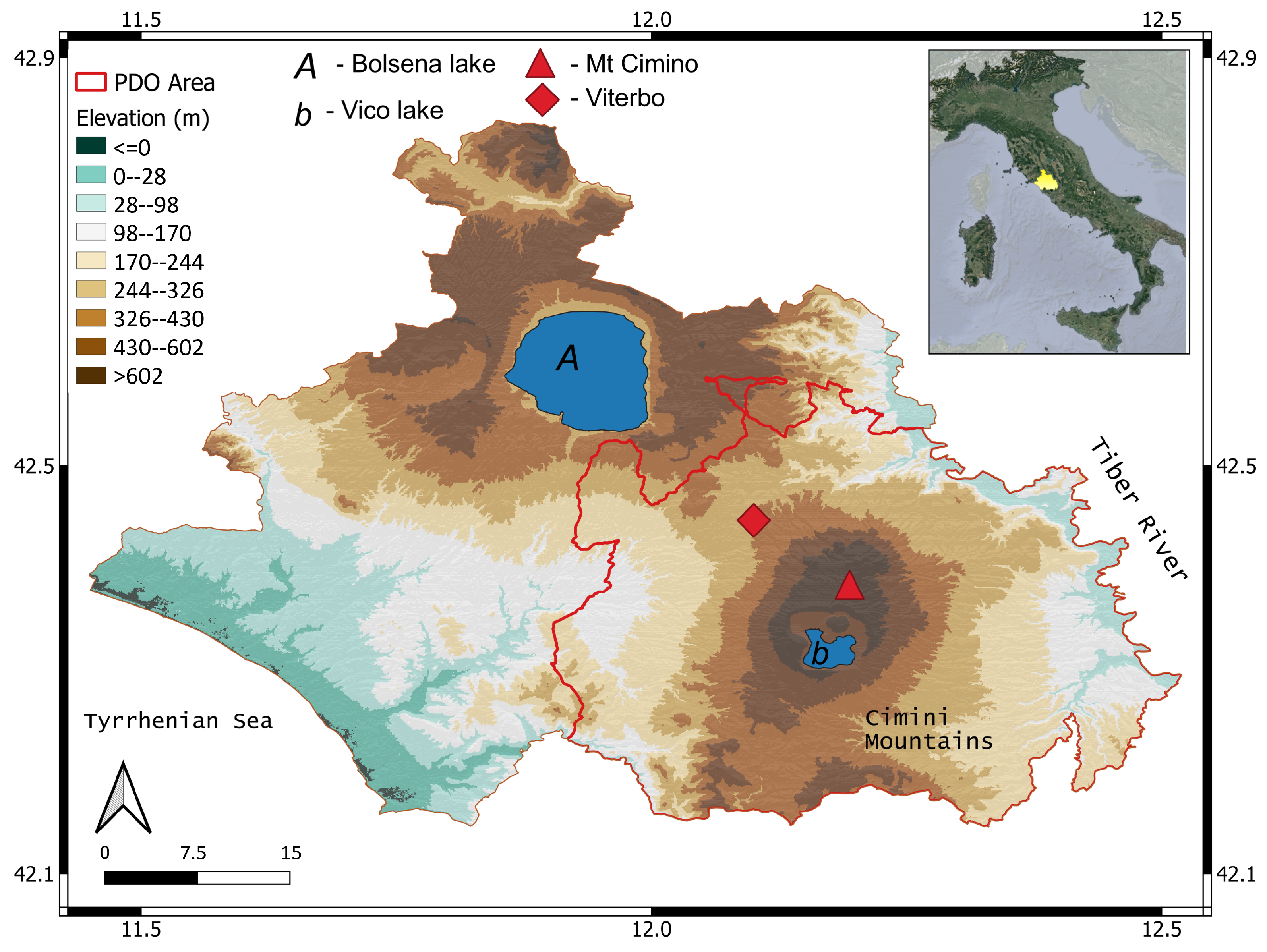
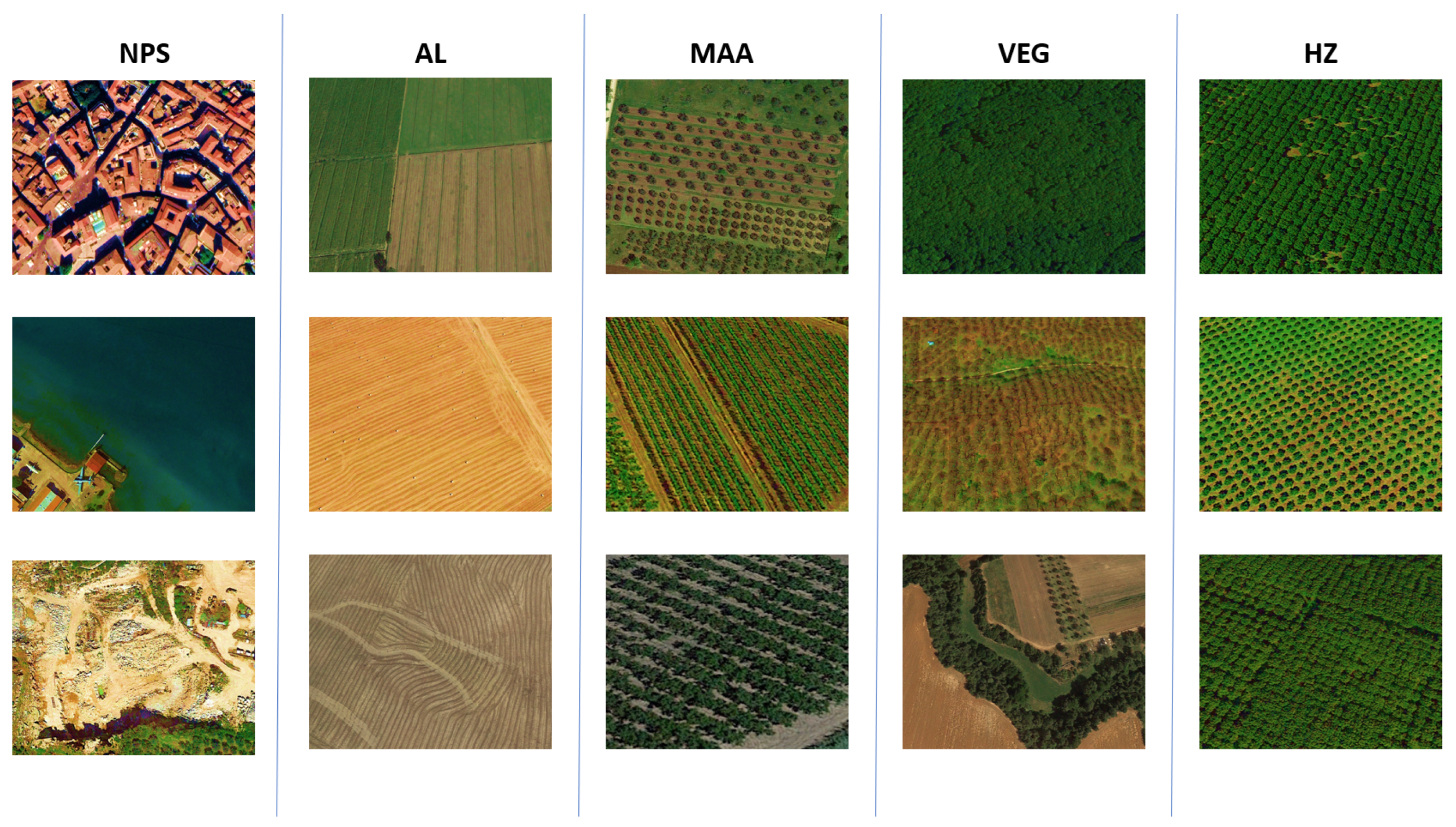



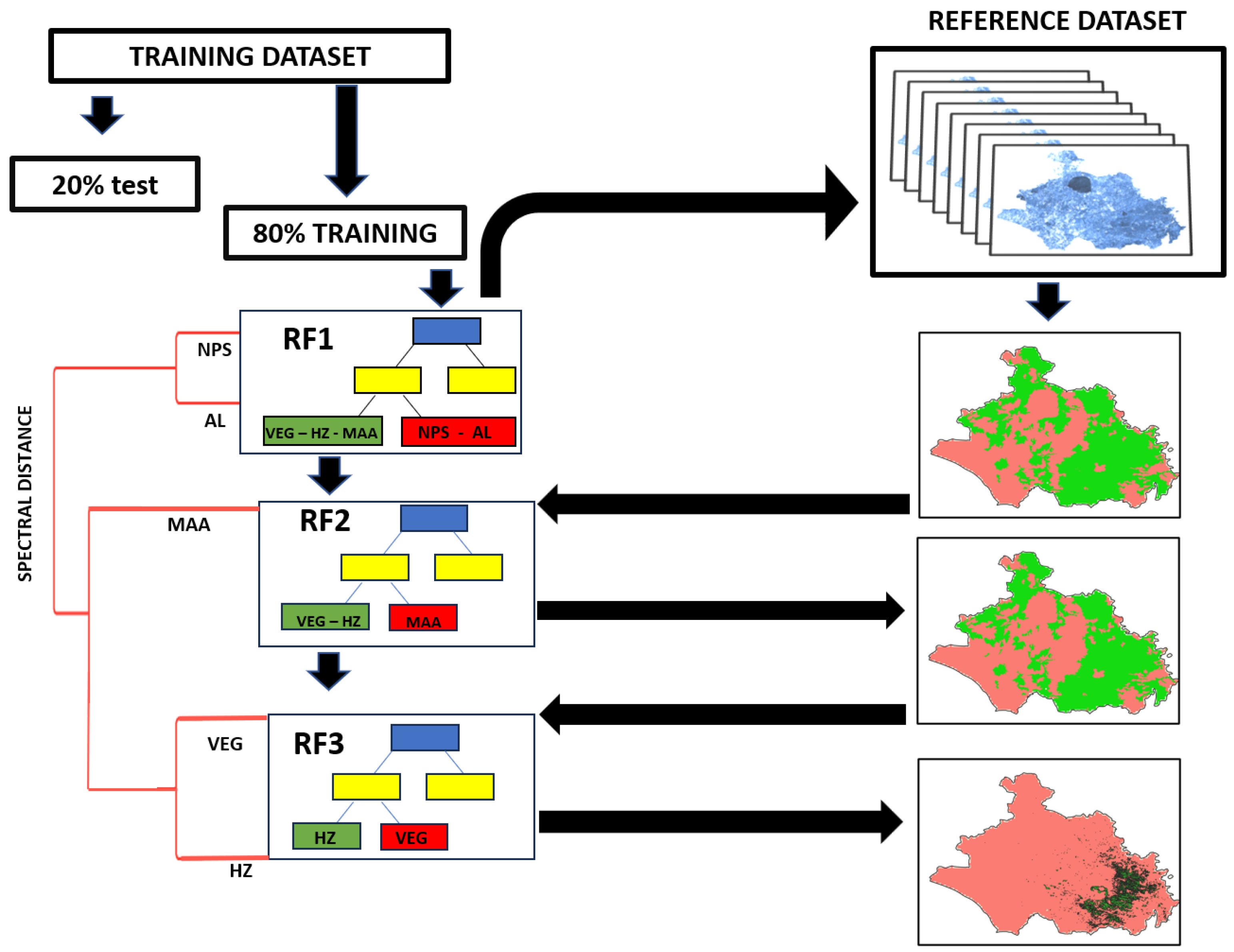

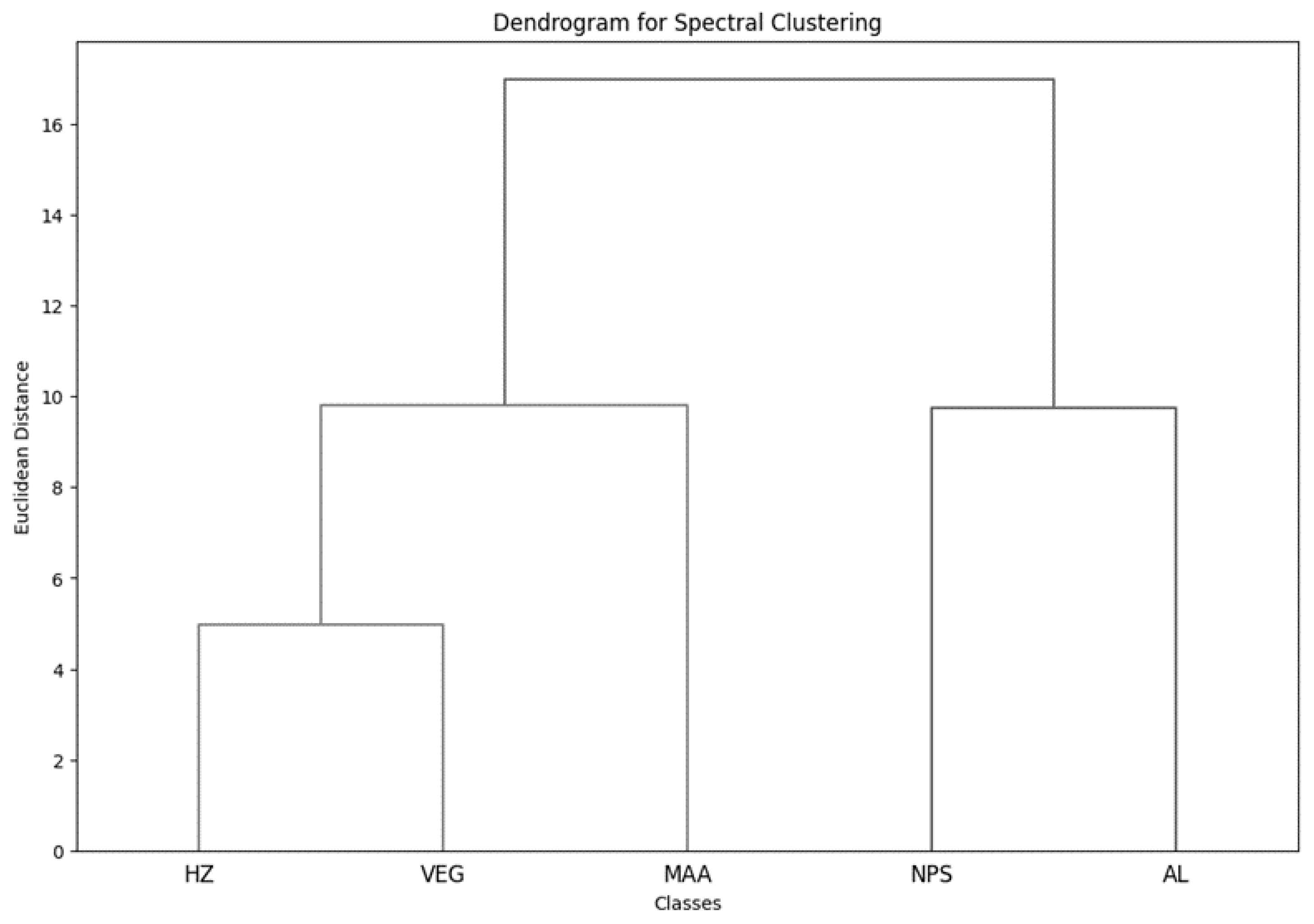
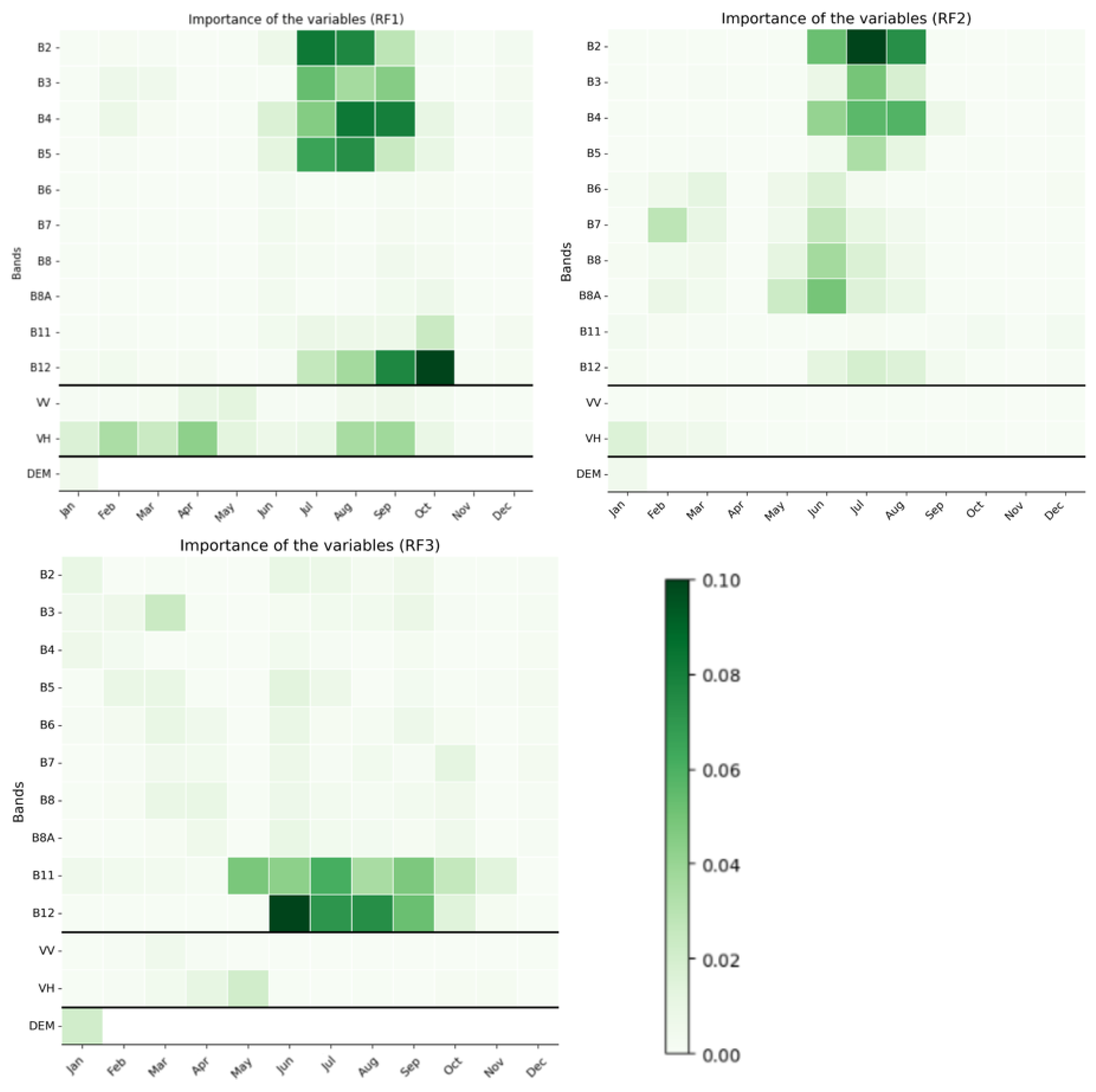
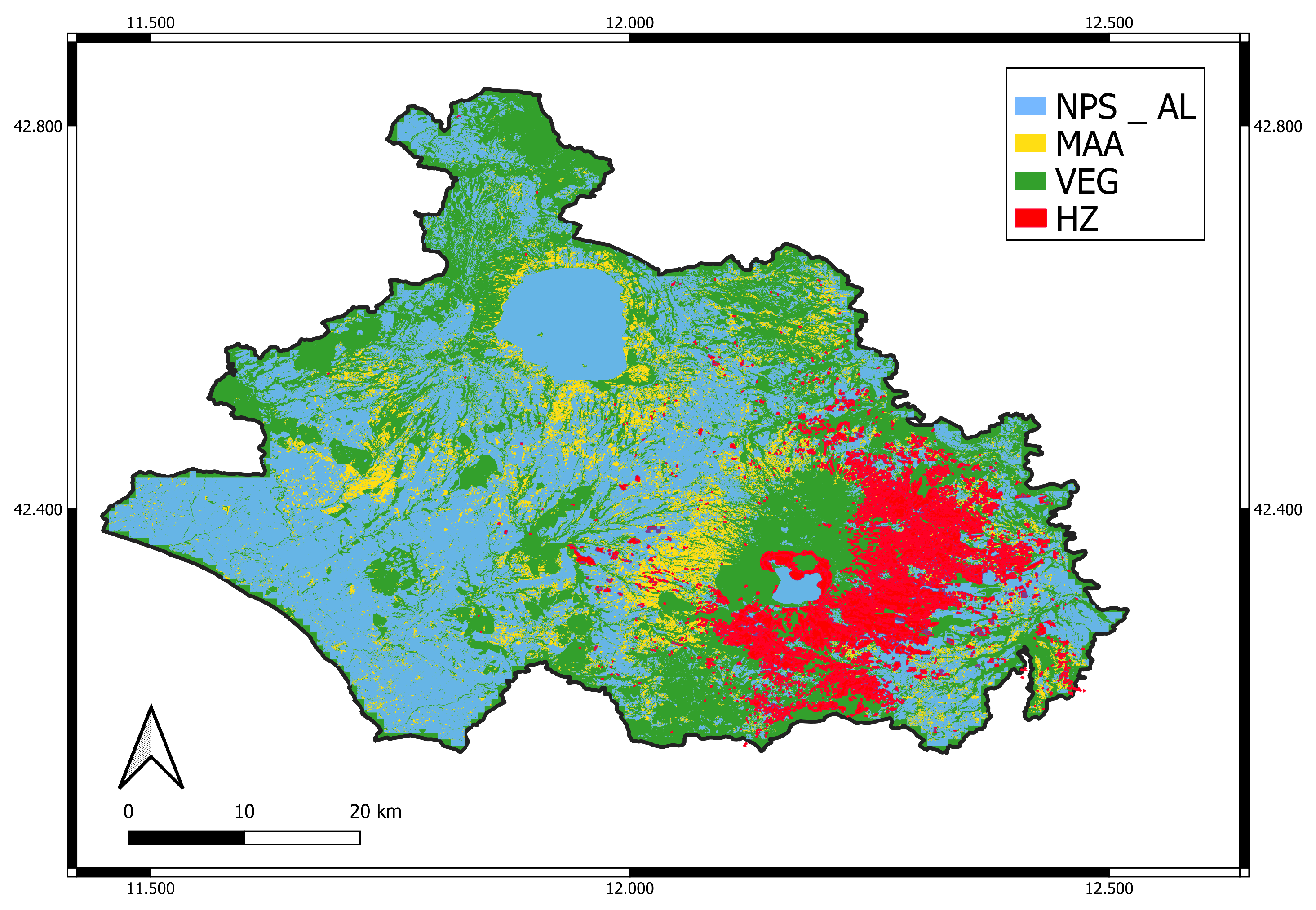
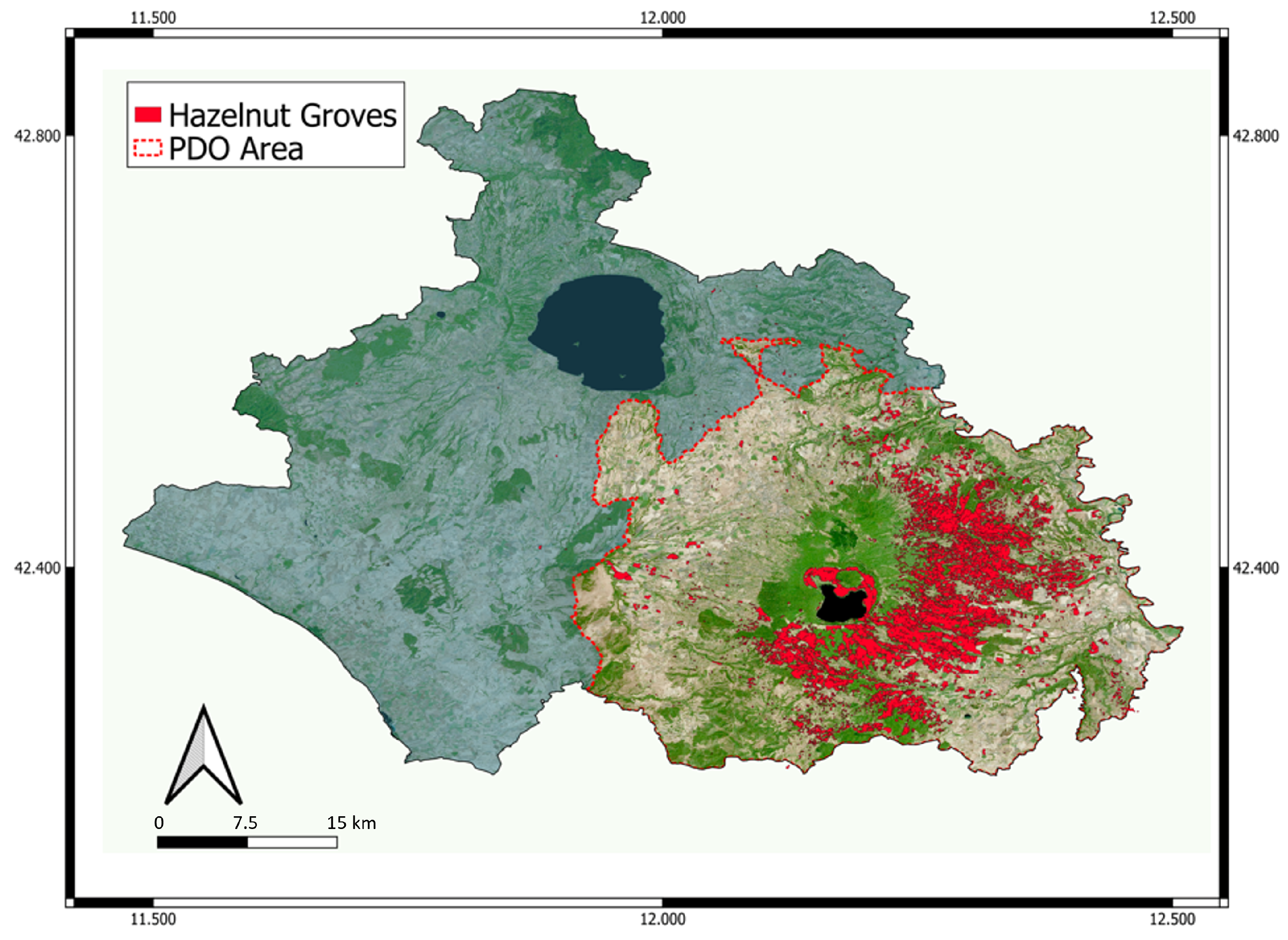
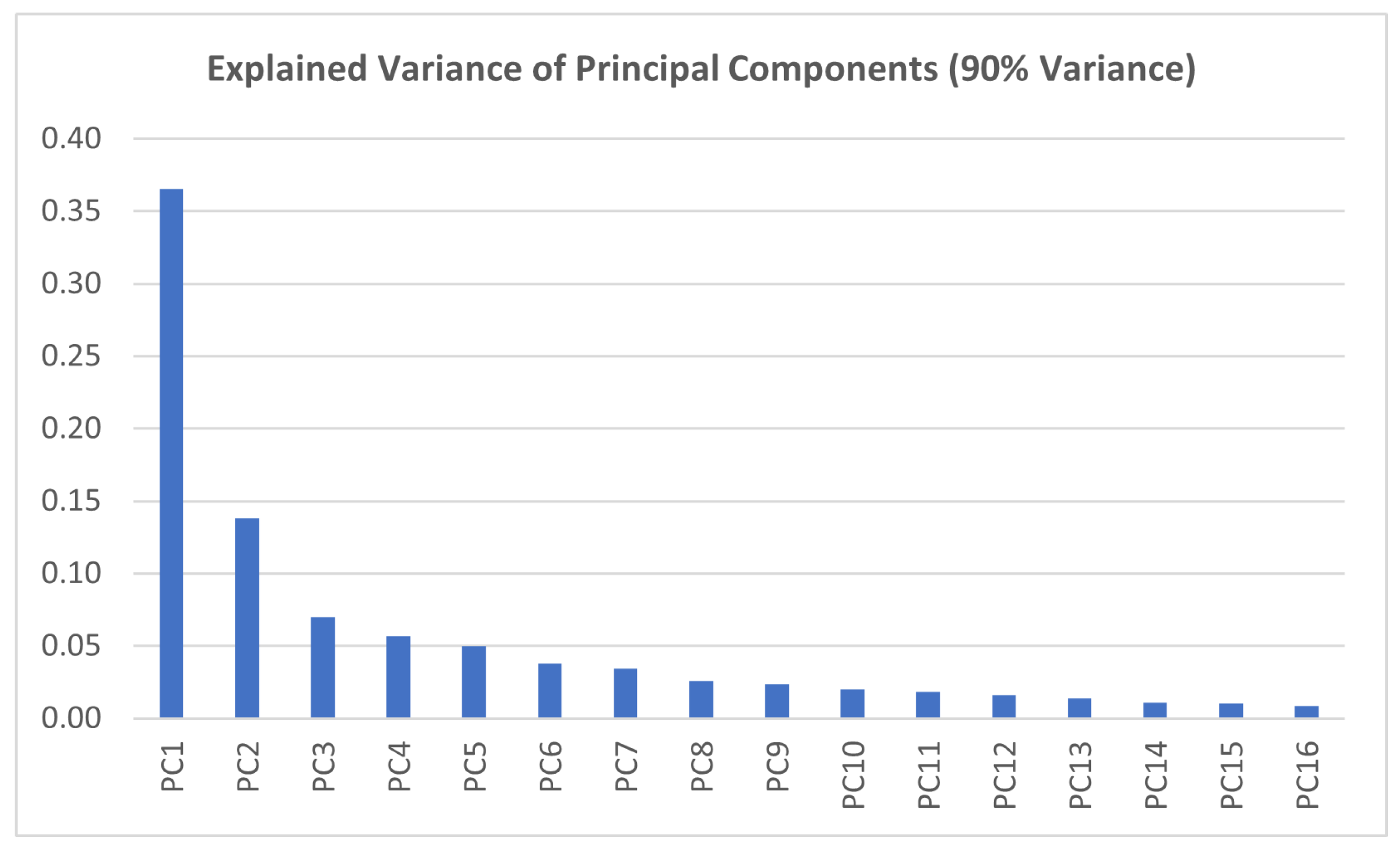
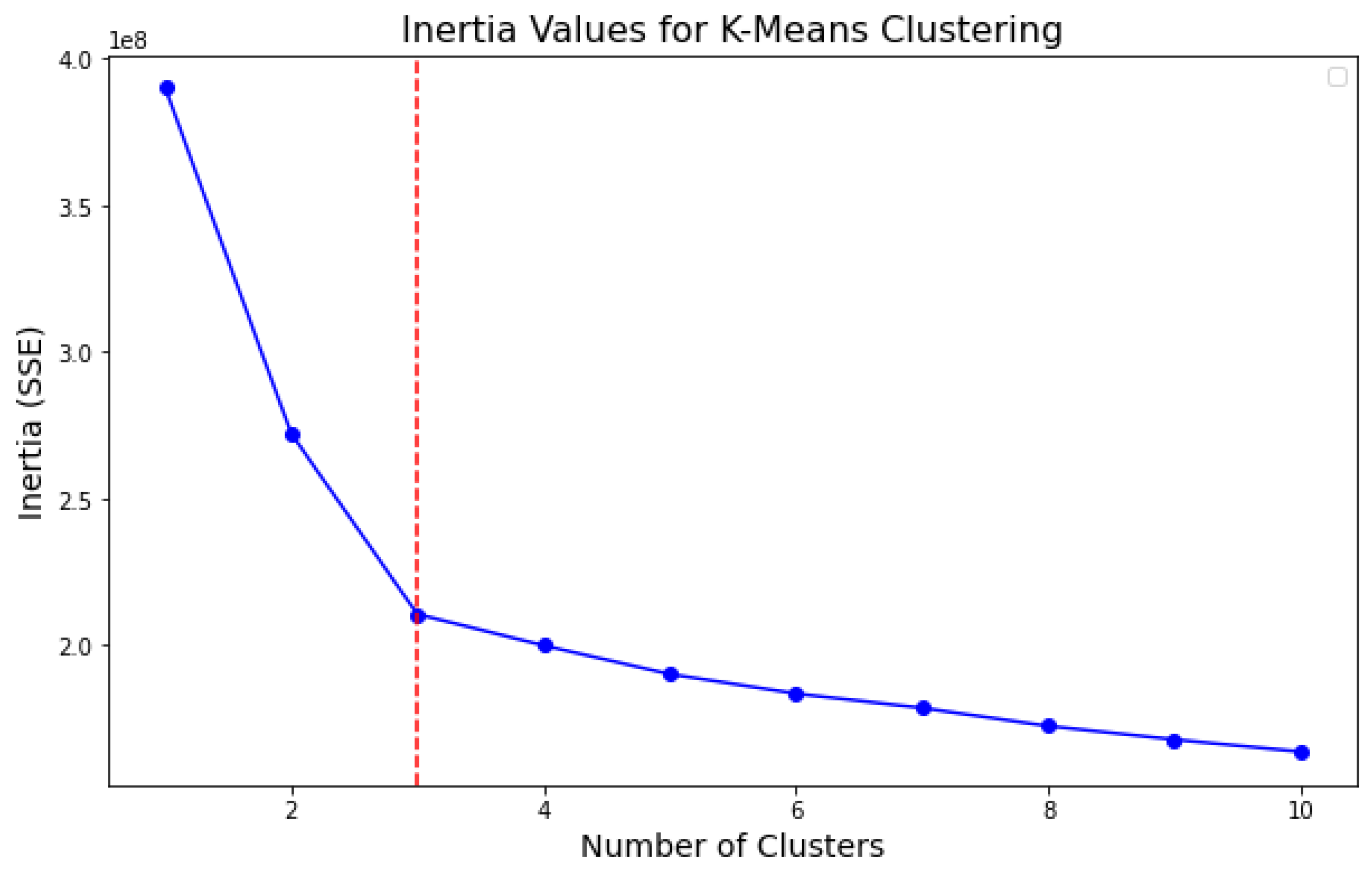
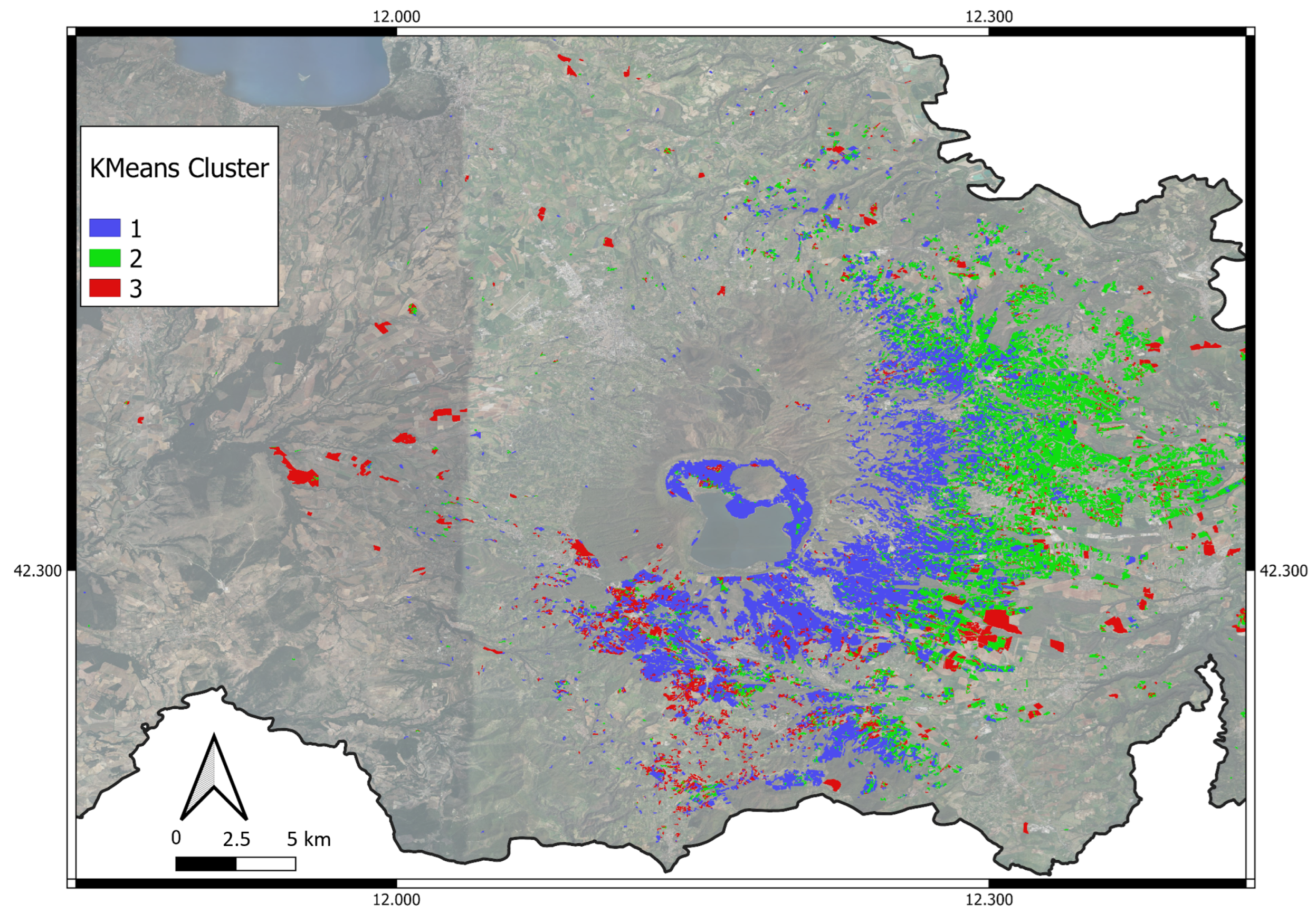

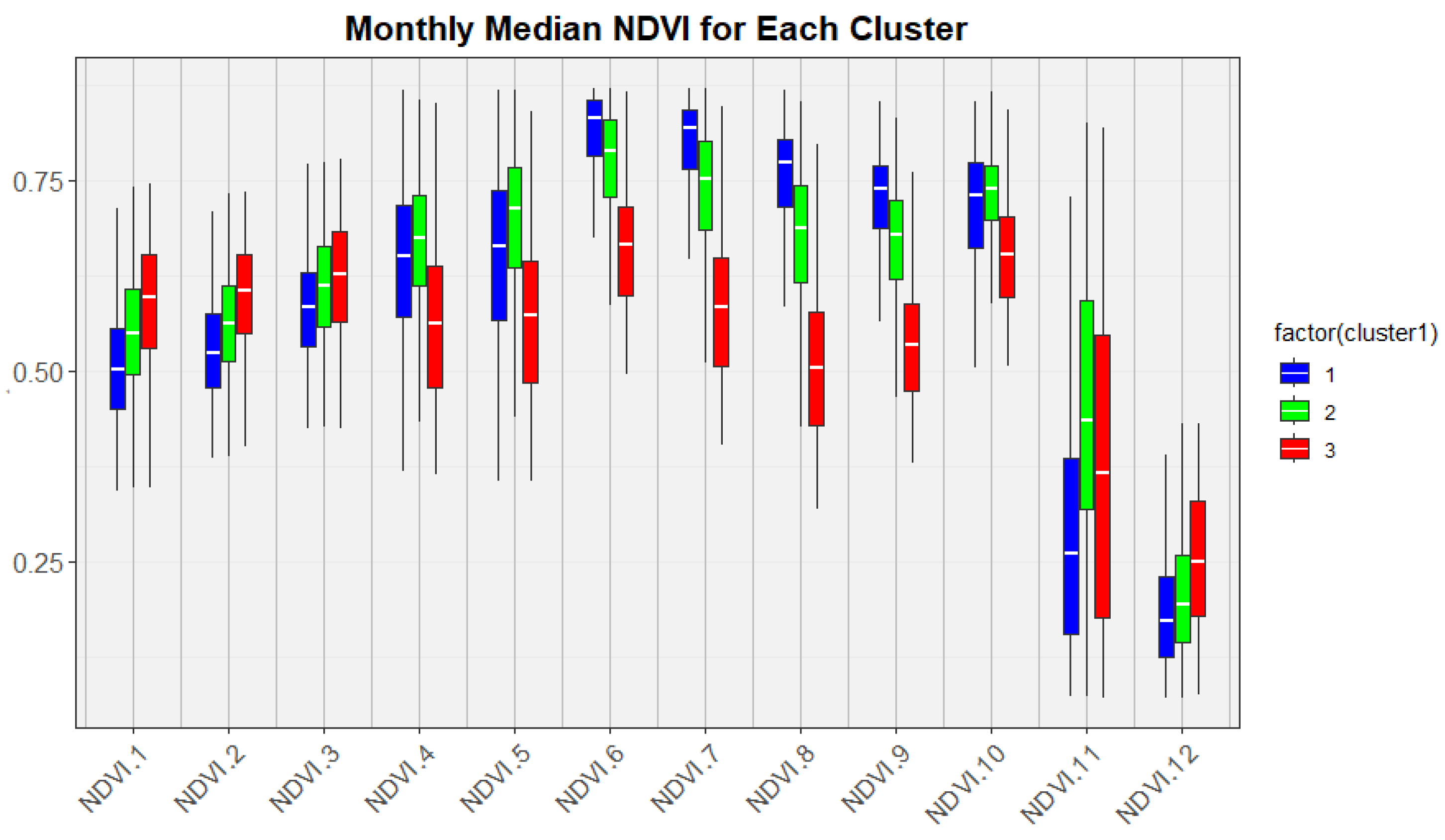
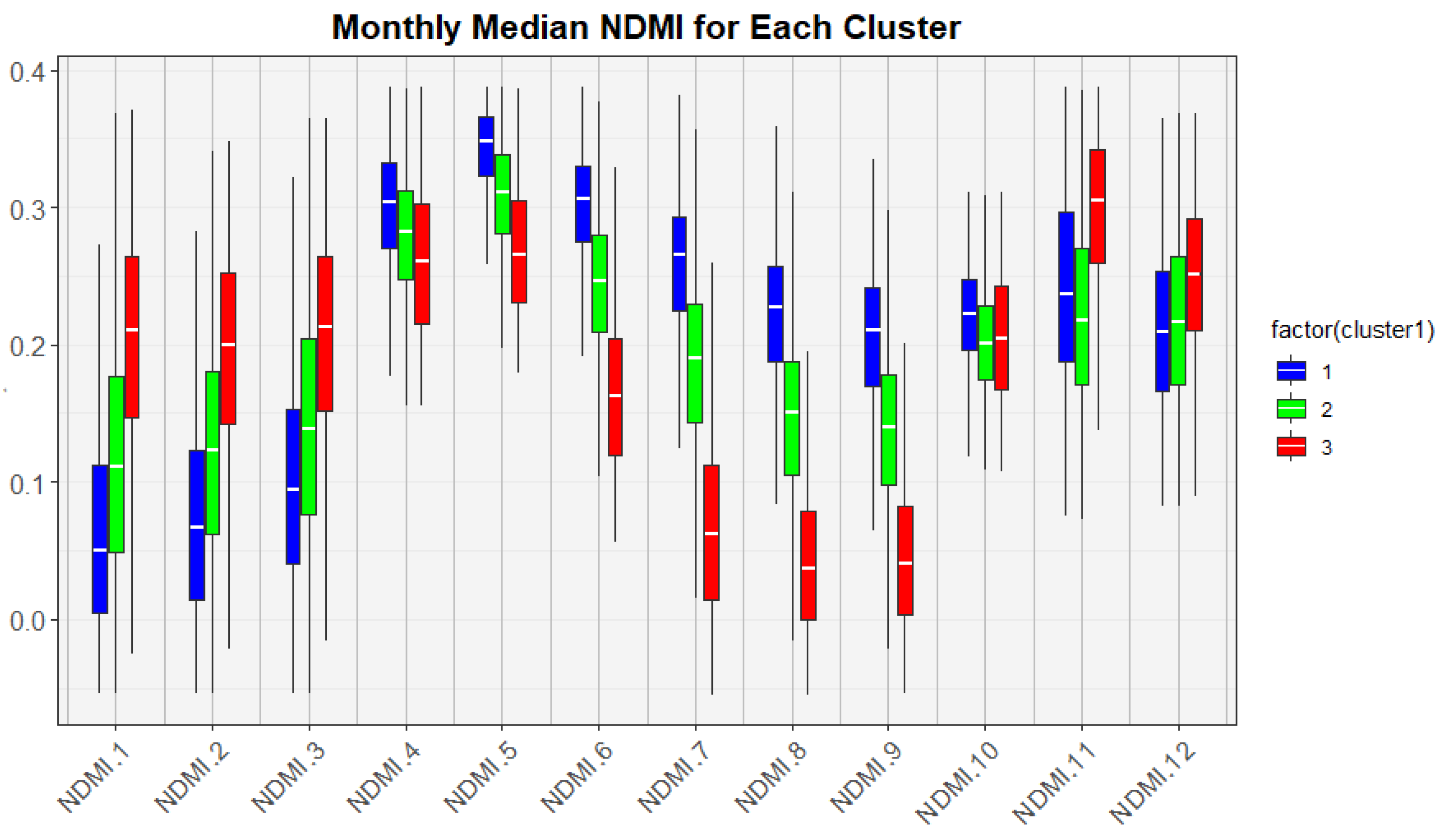
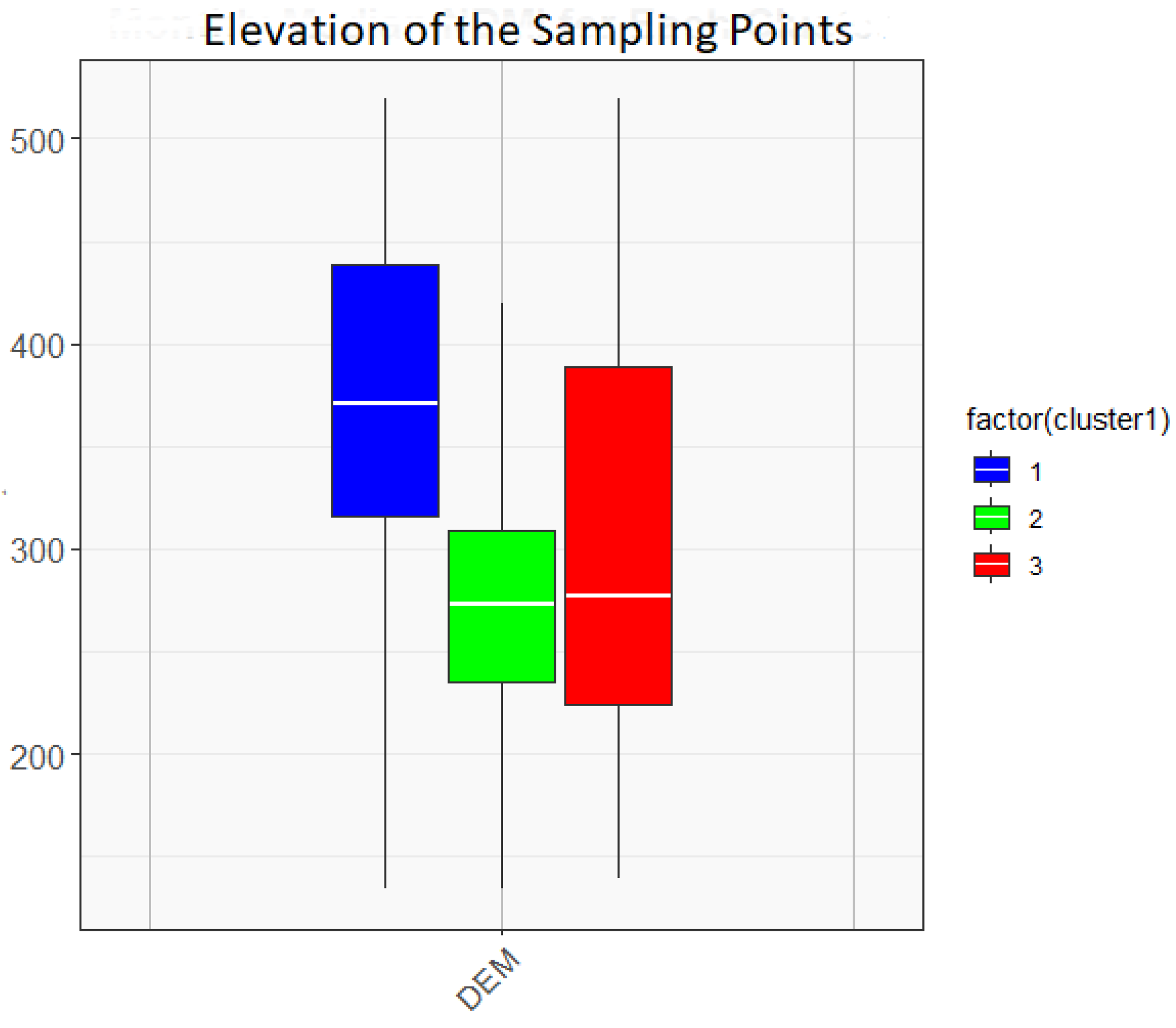
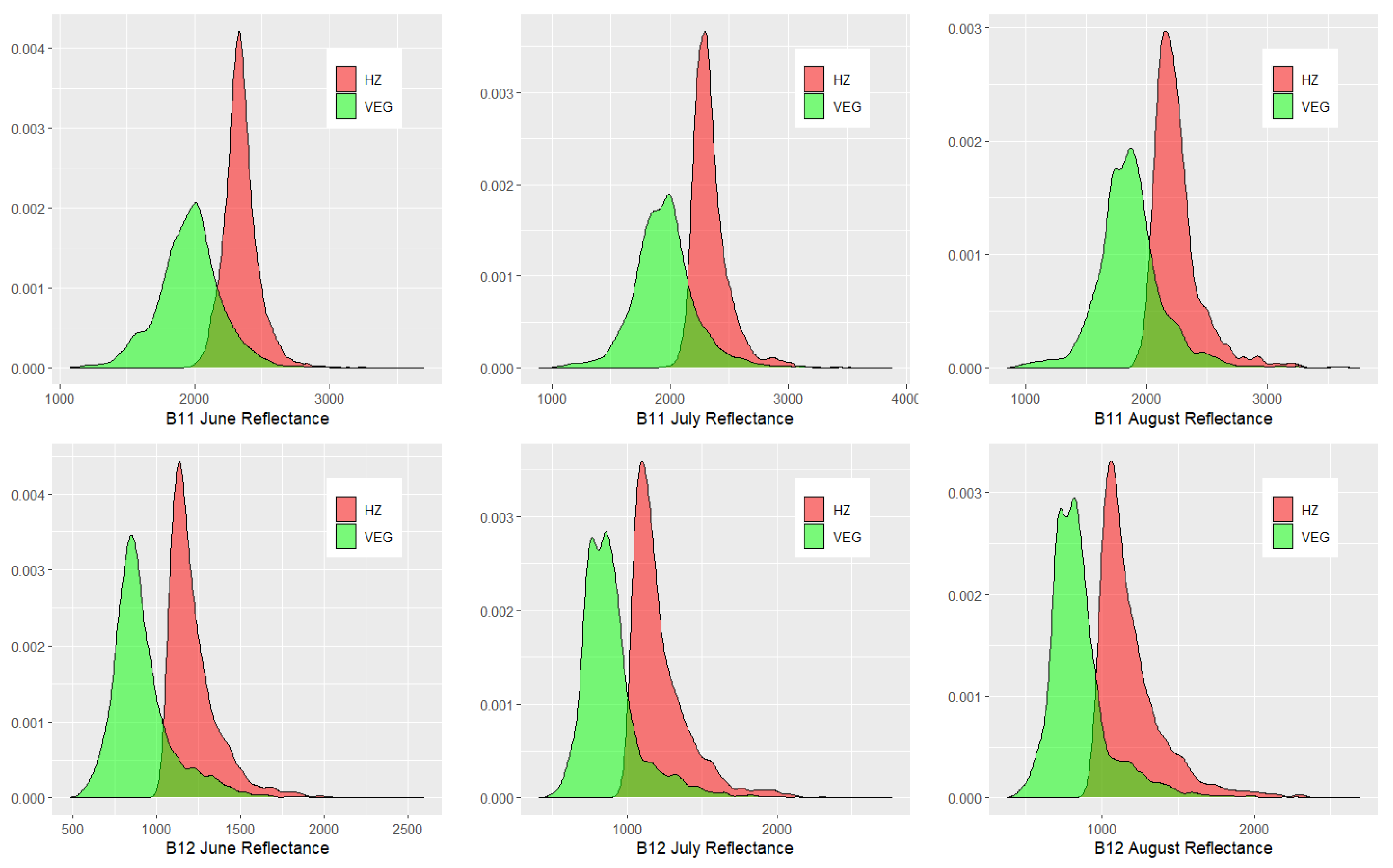

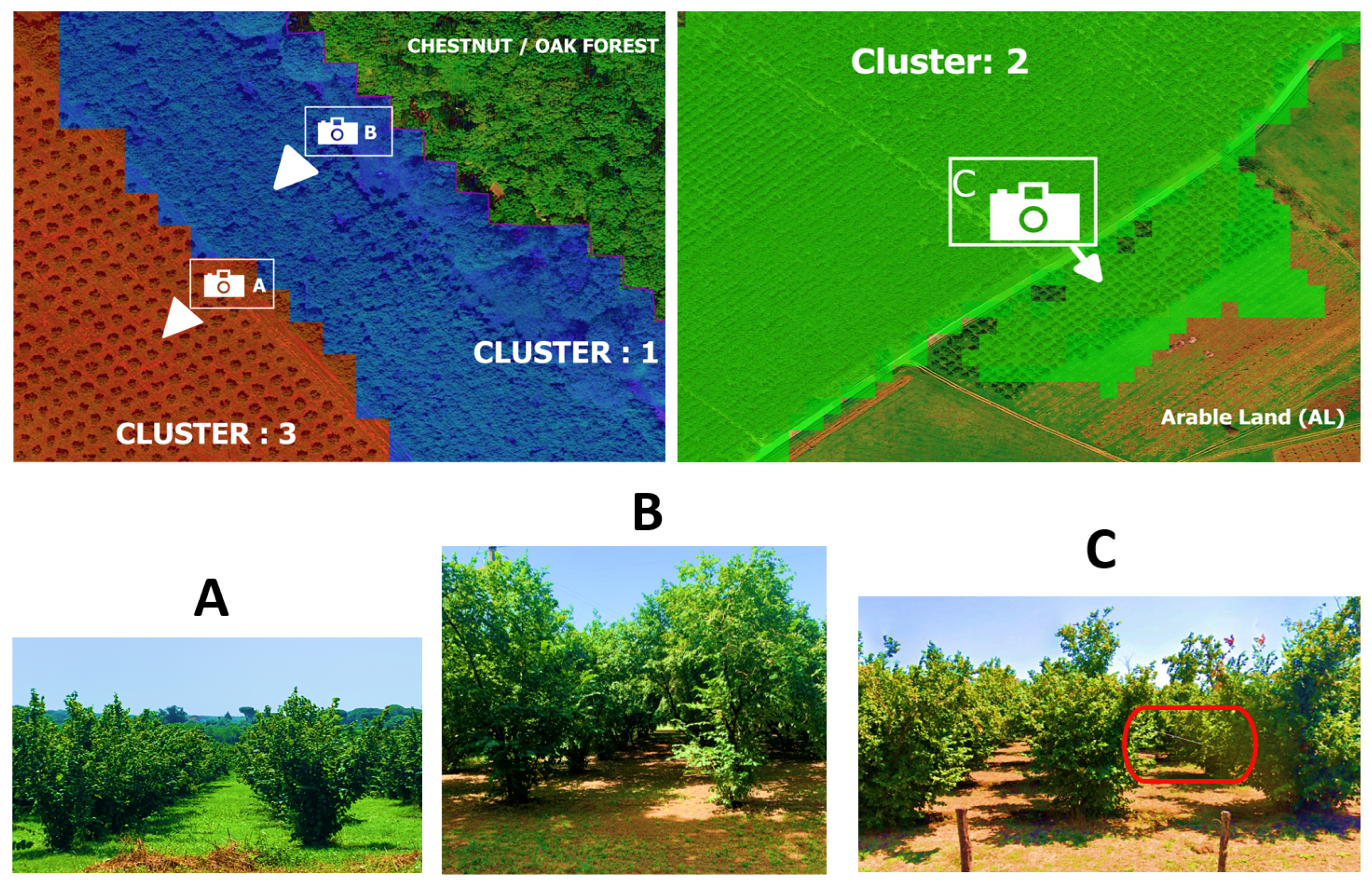
| Data Source | Sentinel-2 | Sentinel-1 | DEM |
|---|---|---|---|
| EE-Collection | S2_SR | S1_GRD | SRTMGL1_003 |
| Bands | B2, B3, B4, B5, B6, B7, B8, B8A, B11, B12 | VV, VH | elevation |
| Filters | Max 10% Tile Cloud Cover | Orbit: ASCENDING | - |
| 01/Jan/2020 - 31/Dec/2022 | 01/Jan/2022 - 31/Dec/2022 | - | |
| N. Images | 1182 | 73 | 1 |
| Reducer | Median, Monthly | Average, Monthly | - |
| VEG | HZ | MAA | AL | NPS | |
|---|---|---|---|---|---|
| VEG | 0 | 3.4 | 5.7 | 9.5 | 8.9 |
| HZ | 0 | 5.7 | 8.0 | 8.5 | |
| MAA | 0 | 6.4 | 7.6 | ||
| AL | 0 | 6.8 | |||
| NPS | 0 |
| RF1 | NPS ∪ AL | VEG ∪ HZ ∪ MAA |
|---|---|---|
| NPS ∪ AL | 3359 | 1 |
| VEG ∪ HZ ∪ MAA | 0 | 8328 |
| RF2 | MAA | VEG ∪ HZ |
|---|---|---|
| MAA | 2449 | 0 |
| VEG ∪ HZ | 0 | 5891 |
| RF3 | HZ | VEG |
|---|---|---|
| HZ | 2406 | 1 |
| VEG | 7 | 3478 |
| Model Performance on Training Set | RF1 | RF2 | RF3 |
|---|---|---|---|
| Overall Accuracy | 0.99 | 1 | 0.99 |
| Precision | 0.99 | 1 | 0.99 |
| Recall | 0.99 | 1 | 0.99 |
| F1-score | 0.99 | 1 | 0.99 |
| Hyperparameters | ES: 150 MS: 5 MD: 20 | ES: 150 MS: 2 MD: 20 | ES: 100 MS: 5 MD: 10 |
| RF1 | NPS ∪ AL | VEG ∪ HZ ∪ MAA |
|---|---|---|
| NPS ∪ AL | 822 | 2 |
| VEG ∪ HZ ∪ MAA | 10 | 2088 |
| RF2 | MAA | VEG ∪ HZ |
|---|---|---|
| MAA | 605 | 6 |
| VEG ∪ HZ | 13 | 1462 |
| RF3 | HZ | VEG |
|---|---|---|
| HZ | 584 | 2 |
| VEG | 2 | 822 |
| Model Performance on Test-Set | RF1 | RF2 | RF3 |
|---|---|---|---|
| Overall Accuracy | 0.99 | 0.99 | 0.99 |
| Precision | 0.99 | 0.99 | 0.99 |
| Recall | 0.99 | 0.99 | 0.99 |
| F1-score | 0.99 | 0.99 | 0.99 |
| Comparison | n | Statistic | p |
|---|---|---|---|
| Cluster 1 vs. Cluster 2 | 3400 | 1283 | 5.01 × |
| Cluster 1 vs. Cluster 3 | 3400 | 506 | 3.90 × |
| Cluster 2 vs. Cluster 3 | 3400 | 55.6 | 8.81 × |
Disclaimer/Publisher’s Note: The statements, opinions and data contained in all publications are solely those of the individual author(s) and contributor(s) and not of MDPI and/or the editor(s). MDPI and/or the editor(s) disclaim responsibility for any injury to people or property resulting from any ideas, methods, instructions or products referred to in the content. |
© 2024 by the authors. Licensee MDPI, Basel, Switzerland. This article is an open access article distributed under the terms and conditions of the Creative Commons Attribution (CC BY) license (https://creativecommons.org/licenses/by/4.0/).
Share and Cite
Lodato, F.; Pennazza, G.; Santonico, M.; Vollero, L.; Grasso, S.; Pollino, M. In-Depth Analysis and Characterization of a Hazelnut Agro-Industrial Context through the Integration of Multi-Source Satellite Data: A Case Study in the Province of Viterbo, Italy. Remote Sens. 2024, 16, 1227. https://doi.org/10.3390/rs16071227
Lodato F, Pennazza G, Santonico M, Vollero L, Grasso S, Pollino M. In-Depth Analysis and Characterization of a Hazelnut Agro-Industrial Context through the Integration of Multi-Source Satellite Data: A Case Study in the Province of Viterbo, Italy. Remote Sensing. 2024; 16(7):1227. https://doi.org/10.3390/rs16071227
Chicago/Turabian StyleLodato, Francesco, Giorgio Pennazza, Marco Santonico, Luca Vollero, Simone Grasso, and Maurizio Pollino. 2024. "In-Depth Analysis and Characterization of a Hazelnut Agro-Industrial Context through the Integration of Multi-Source Satellite Data: A Case Study in the Province of Viterbo, Italy" Remote Sensing 16, no. 7: 1227. https://doi.org/10.3390/rs16071227
APA StyleLodato, F., Pennazza, G., Santonico, M., Vollero, L., Grasso, S., & Pollino, M. (2024). In-Depth Analysis and Characterization of a Hazelnut Agro-Industrial Context through the Integration of Multi-Source Satellite Data: A Case Study in the Province of Viterbo, Italy. Remote Sensing, 16(7), 1227. https://doi.org/10.3390/rs16071227










